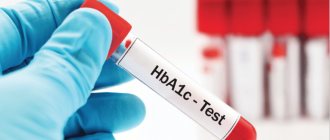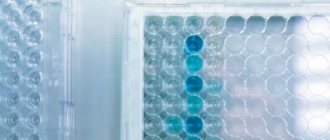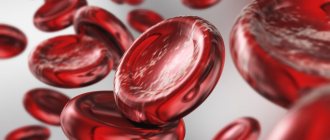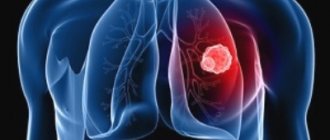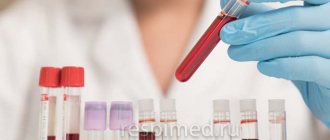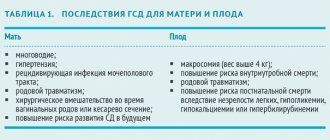Causes of low hemoglobin in a child
If a child has low hemoglobin, the reasons can be very different. One of the reasons why low hemoglobin may be detected in a child is the low resistance of the hematopoietic mechanism in children to the influence of various factors. Doctors often call the second reason the rapid growth of the body, which results in a lack of nutrients (the body consumes material for the construction of cells faster than it is supplied).
The answer to the question of why a child has low hemoglobin depends on many factors. Experts distinguish two types of anemia: internal and external. The causes of anemia of internal origin can be:
- hemolysis (destruction of red blood cells);
- abnormalities of hemoglobin synthesis;
- hereditary diseases of the hematopoietic organs;
- insufficient bone marrow development.
Anemia of external origin can be caused by:
- insufficient and monotonous nutrition;
- parasitic or infectious diseases;
- problems with the gastrointestinal tract;
- allergic, skin diseases (neurodermatitis, diathesis, etc.);
- lack of vitamins in the diet, especially folic acid and vitamin C;
- lack of fresh air and low physical activity.
In some cases, the causes of low hemoglobin in children are a difficult pregnancy or illnesses of the mother during gestation: placental abruption, bleeding, threat of miscarriage, infectious diseases. If a mother is diagnosed with anemia during pregnancy, there is a high probability that the baby will be born with anemia. Low-quality or inadequate maternal nutrition can lead to such consequences. Low hemoglobin levels are especially common in children of vegans, since iron from plant foods is less absorbed than from animal products.
Contraindications
The healthy vegetable has few contraindications. But, as with any restrictions, in some cases you definitely need to know about the peculiarities of eating carrots.
- Exacerbation of peptic ulcer disease. The acute period of diseases of the digestive tract requires caution in consuming raw root vegetables. But you can drink the juice in moderation.
- Diabetes. For this disease, low-sweet varieties are recommended for consumption.
- Thyroid diseases. The high iodine content imposes restrictions on the consumption of carrots.
- Hypervitaminosis. If there is an excess of vitamin A, the consumption of carrots is prohibited: this can cause real intoxication, which manifests itself in the skin turning orange, if hypervitaminosis is associated specifically with the consumption of carrots - in dizziness and nausea.
- Individual intolerance. Like any brightly colored product, carrots can cause allergies. If you experience signs of a rash, redness of the skin, watery eyes, or a runny nose of an allergic nature, you should stop eating carrots immediately.
If we exclude the above cases, then during pregnancy carrots become one of the essential products. Absolutely all body systems need the substances that this vegetable is rich in.
Signs of low hemoglobin in a child
To accurately diagnose anemia, you must consult a doctor and undergo tests prescribed by a specialist. Low hemoglobin in a child can be determined by signs that suggest a problem. Some of the most obvious signs include:
- increased lethargy and drowsiness;
- irritability, moodiness, tearfulness, excessive nervousness;
- pale and dry skin;
- fragility and dullness of hair;
- the appearance of non-healing ulcers in the corners of the mouth;
- the appearance of cracks on the feet and palms;
- complaints of tinnitus, dizziness, headache;
- decreased blood pressure, tachycardia, shortness of breath.
Parents should pay attention to the fact that the child tries to chew earth, chalk or lime, since such actions may be a sign of a serious decrease in hemoglobin levels.
Symptoms and consequences
Symptoms can indicate that a child has low hemoglobin long before the problem becomes severe. Pale skin of a child, drowsiness and tearfulness, weakness and loss of appetite may be symptoms indicating insufficient blood supply to the body's tissues with oxygen and nutrients, and poor functioning of the hematopoietic organs. Children may experience deterioration in cognitive functions - memory, learning, and ability to concentrate are affected.
This disease is much more dangerous than many parents think. Consequences of low hemoglobin in a child:
- dysfunction of the immune system;
- development of kidney and heart diseases;
- developmental delay;
- heart failure and cardiopathy;
- skin diseases.
A critical decrease in indicators can lead to hypoxic coma.
When to see a doctor
Parents should urgently consult a doctor if they experience symptoms such as fainting and dizziness in a child, weakness and constant fatigue, low physical activity, thinning and hair loss, peeling nails and the appearance of white stripes on the nail plates, increased heart rate during physical activity, breathing disorders. Anemia in children is treated by a pediatrician who, if necessary, consults with other specialists.
You can choose a pediatrician and make an appointment at JSC “Medicine” (clinic of Academician Roitberg) by phone or using the feedback form. Our clinic is located in the center of Moscow at 2nd Tverskoy-Yamskaya lane, 10, a five-minute walk from the Mayakovskaya metro station.
Diagnostics
During the first consultation, the pediatrician examines the little patient, collects complaints and medical history. The results of a medical examination will most accurately tell you that a child has low hemoglobin in the blood. The main diagnostic method is a general blood test, the results of which indicate the following parameters:
- low hemoglobin content;
- low number of red blood cells;
- lowering the color index to 0.85.
The level of platelets, leukocytes, etc. is also determined. Additional information for diagnosis is provided by a biochemical blood test. If there is doubt about the diagnosis, the pediatrician may refer to a hematologist or offer the parents an extensive examination in order to identify the cause of the child’s low hemoglobin. Complex cases of the disease are dealt with by a qualified hematologist.
8 more useful properties
The cardiovascular system needs the nutrients of vegetables just like the circulatory system. And with regular consumption of the root vegetable, the heart muscle, veins, arteries and capillaries heal themselves and help the better functioning of all organs.
- Blood purification. Carrot juice has a particularly good effect on blood purity: it absorbs waste and neutralizes toxins that enter the blood with food, water and inhaled air.
- Reduced sugar levels. For diabetes mellitus, salads and desserts made from root vegetables are useful, despite their sweetness, as they help lower the sugar content.
- Reducing cholesterol. The substances contained in the vegetable reduce cholesterol levels and cleanse blood vessels. Fiber also retains excess animal fats in the intestines, preventing them from being absorbed into the blood.
- Fortification and mineralization. The root vegetable enriches the blood with a huge amount of vitamins and minerals.
- Reduced blood pressure. Carrot juice and regularly consumed fruit pulp help maintain blood pressure at the desired level: in case of hypotension, the product cannot do any harm, but in case of hypertension it helps lower blood pressure.
- Strengthening coronary and cerebral vessels. Vitamins and minerals, such as vitamins C, PP, potassium, reduce the permeability of the walls of blood vessels, making them at the same time more elastic. Thanks to this, with regular consumption of the vegetable, blood vessels easily narrow and dilate, regulating blood pressure.
- Improved blood circulation. The beneficial substances from the root vegetable together activate blood circulation. This is especially noticeable in improving blood circulation in the brain. All this is an excellent prevention of cerebral atherosclerosis.
- Improving metabolism and facilitating the work of the heart. The presence of carrot dishes in the daily menu improves metabolism, which helps to lose weight and relieves stress on the heart muscle.
Types of disease
Experts distinguish several types of anemia:
- acute, occurring after an injury with significant blood loss or frequent nosebleeds;
- hemolytic, which occurs in cases of destruction of hemoglobin-containing red blood cells before performing their functions;
- symptomatic, signaling the presence of chronic diseases in the child’s body;
- iron deficiency, which is the most common.
Treatment of low hemoglobin in a child
The choice of treatment method for hemoglobin in a child depends entirely on the causes of the disease and on individual indicators. After determining ways to eliminate the causes of the disease, the pediatrician gives parents recommendations regarding the baby’s diet and daily routine. The doctor will tell you about contraindications, preventive measures, etc. Effective measures include iron replenishment therapy.
What to remember when planning your diet
- There are foods that promote the absorption of iron, and there are those that reduce the absorption of the beneficial microelement. So, it is better to reduce the consumption of coffee and strong tea, rich in tannin and caffeine, or give up these drinks for a while.
- It is also necessary to reduce the amount of dairy products containing calcium. But you shouldn’t give them up at all.
- Vitamin C does not interfere with the absorption of iron, but improves it, so the diet for patients with anemia must include freshly squeezed juices from citrus fruits, currants and apples.
- Do not subject food to strong heat treatment - this will cause it to lose beneficial substances that are destroyed during the cooking process. Fruits and vegetables are best eaten raw.
- A tip for all plant-based food lovers: be sure to soak your legumes and nuts overnight. The fact is that they contain phytates, which make important and valuable microelements and vitamins for our body unavailable. Just pour water over walnut kernels, lentils or beans - in the morning all you have to do is cook and eat them properly.
- Products for increasing hemoglobin in the blood have their own antagonists. This is not only all food containing calcium, but spinach, blueberries, sorrel, rich in oxalic acid, and cereals, which contain magnesium. Dishes made from them should be consumed either 2 hours before eating iron-containing food, or 2 hours after.
- Honey, tomatoes, red meat, mushrooms (both fresh and dried), rabbit meat, liver, and sweet peppers help in the absorption of useful microelements.
The diet for anemia should be varied, but selective. Don’t forget about beneficial and unfavorable combinations - this will help you create the right menu for every day. Be sure to include juices - concentrated pomegranate, orange, apple.
How to make an appointment with a pediatrician
The pediatric department, created on the basis of JSC "Medicine" (clinic of academician Roitberg) in Moscow, offers European-level services for the diagnosis, treatment and prevention of low hemoglobin. To receive highly qualified medical care, you can make an appointment with a pediatrician who will conduct an examination and comprehensive medical examination of the child.
To make an appointment with a specialist at the Pediatric Department of JSC “Medicine” (clinic of Academician Roitberg), use one of the following methods:
- quick registration form on the website;
- by telephone 24/7;
- using a mobile application.
JSC "Medicine" (clinic of academician Roitberg) is located in the center of Moscow at 2nd Tverskoy-Yamskaya lane, 10, a five-minute walk from the Mayakovskaya metro station.



